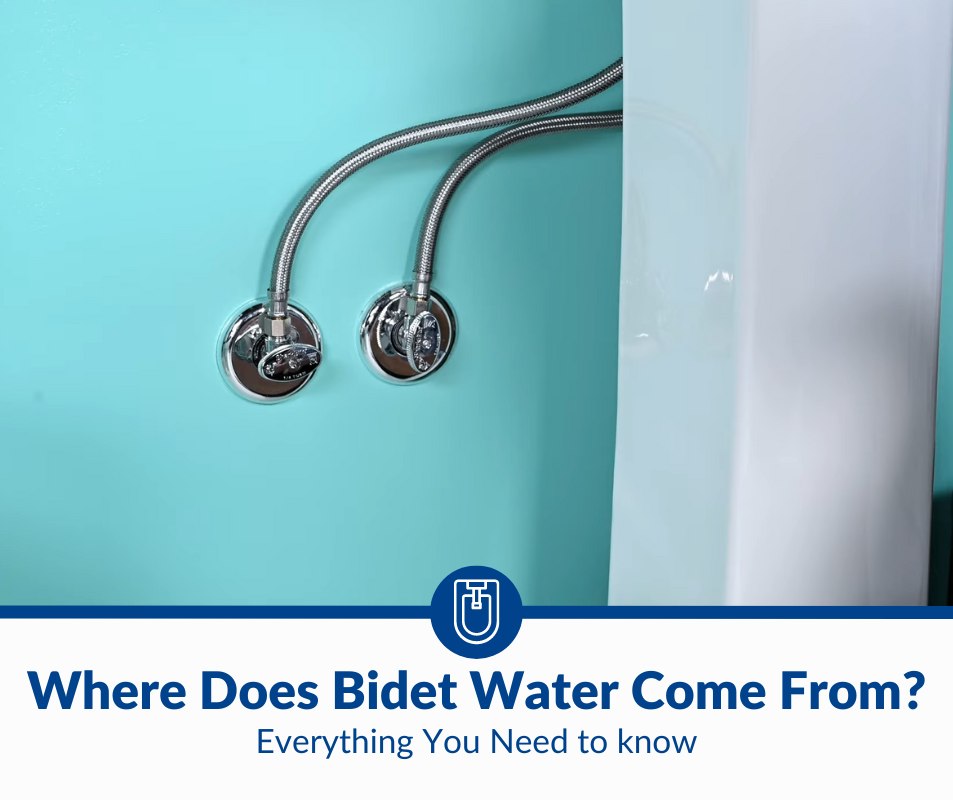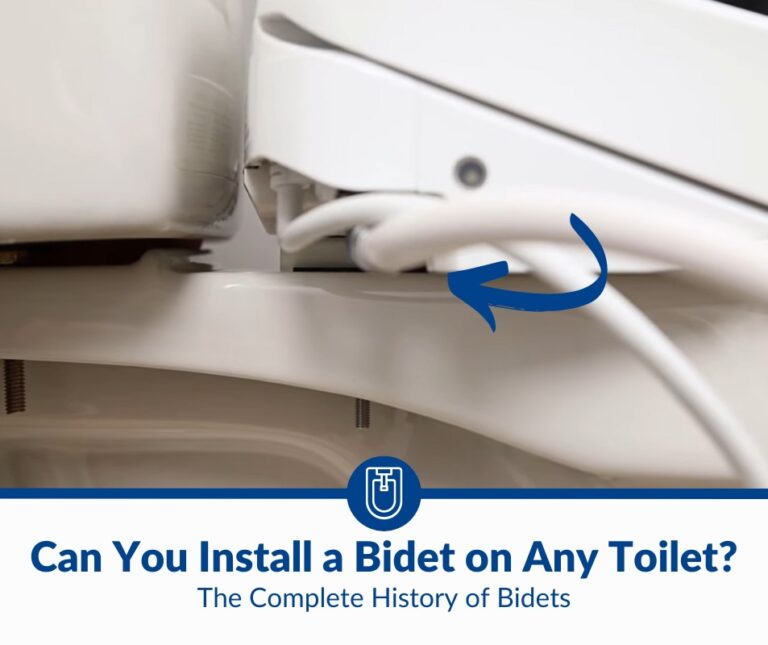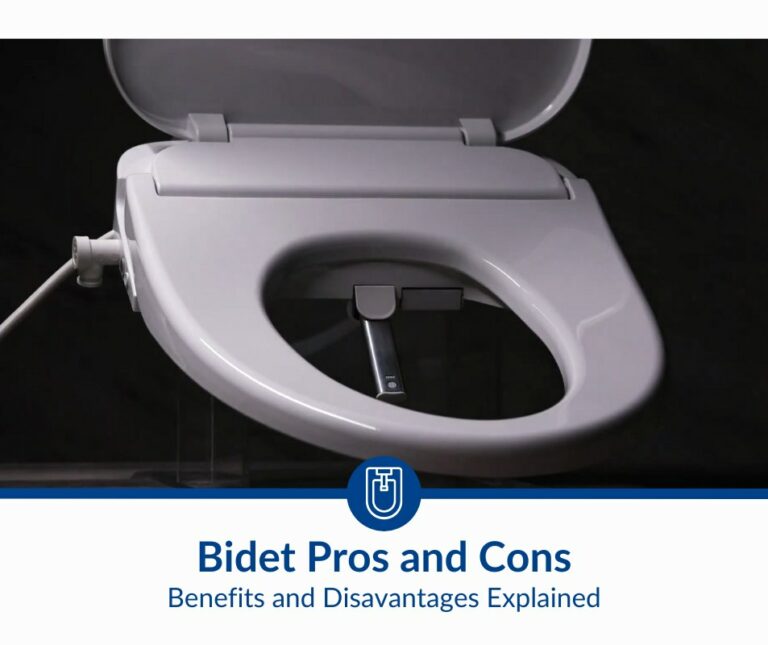Where Does Bidet Water Come From?
Bidets are becoming increasingly popular in the United States, but if you haven’t hopped on the bandwagon yet, you may still have a few questions you’d like answered before you commit. One of these might be where bidet water comes from.
Bidet water comes from your home’s freshwater supply. It’s the same water you use for showers and sinks. Bidet water never comes from the toilet, so you don’t need to worry about bacteria or other pathogens contaminating it.
In this article, I’ll answer your questions about bidet water, including where it comes from and if it’s sanitary. I’ll also offer some guidance on improving your bidet’s sanitation. Let’s get started!
Is Bidet Water Clean?
The bidet water is clean. The water comes from your house’s fresh water supply, which is located behind the toilet. You can safely use bidet water because it’s the same water that your showers and sinks use.
If you’re considering a bidet, you’re probably curious about where the water the bidet uses comes from. After all, this water will clean your sensitive private parts, and unsanitary bidet water can seem like an unpleasant and unhealthy prospect.
Bidet water is as clean as your shower or sink water. The water in a bidet arrives in a pipe that’s attached to it and the water line behind the toilet.
If you have a hot water bidet, the water still comes from your house’s fresh water supply. It will arrive in the bidet through your home’s hot water supply. However, some bidets have in-built heating elements where they heat the cold water from the supply pipe. Heated bidet water is even more sanitary if the temperature is high enough to kill certain pathogens, such as Legionella.
If you’re still concerned about water cleanliness, add a water filter to your bidet, so the water goes through an additional step before reaching your body. This type of filter is useful and can give you peace of mind. However, it isn’t necessary, so don’t worry if your bidet doesn’t have one or if it’s not affordable to install one.
Do Bidets Use Toilet Water?
Bidets do not use toilet water. However, even if your bidet did use toilet water, it would be fine because toilet water is relatively clean, and it’s only the contact with the toilet that makes it dirty.
Toilets are extremely popular breeding grounds for bacteria such as E. coli and salmonella, and those bacteria can transfer to the water in the bowl.
Regardless, if you’re considering getting a bidet, you need not worry whether or not your toilet water is clean. There’s also no need to worry about the regular and bidet toilet water getting mixed up. Most bidet types have T or Y connectors that divert the water before it reaches the regular toilet.
Are Bidets Sanitary?
Making a big change is scary, and for people who have always used toilet paper after using the toilet, it can feel overwhelming to switch to using a bidet. This change can be even more challenging if you’re worried about your health and the sanitation of using a bidet.
Bidets are relatively sanitary and can be more sanitary than regular toilets.
Here are some facts to quell your concerns:
- A nozzle guard protects most bidet nozzles. If you’re worried about the bidet nozzle getting dirty and contaminated, it might help you to know that most nozzles are protected by a guard and are retractable, so they only come out when it’s time to clean.
- Many bidet seats come with a self-cleaning feature. This self-cleaning feature will rinse the nozzle when you press the button on the bidet. Therefore, you can clean your bidet nozzle as often as you like to increase your comfort and peace of mind.
- Toilet paper is a leading cause of irritation and discomfort in the anal area and is not hygienic. Because people in the United States have been using toilet paper for so long, the primary belief in the country is that it’s hygienic. However, it often smears fecal matter around the skin, which can cause irritation and discomfort, and isn’t clean or hygienic. Using water is much cleaner.
- Women who use bidets are less likely to get urinary tract infections. Urinary tract infections are common for women, especially if their vaginal area isn’t properly cleaned. Bidets do a more thorough job than toilet paper cleaning that area, which may reduce the number of UTIs a woman gets in her lifetime.
- Bidets may decrease your risk of developing hemorrhoids. A bidet’s gentle yet firm pressure may reduce your risk of developing hemorrhoids, which can be painful and irritating.
Another excellent benefit to installing a bidet in your home is that you’ll save a fortune on toilet paper. Although the upfront cost of installing a bidet can be costly, what you save on toilet paper after a few years can make it worth it in the long run. Plus, you’ll be playing your part in reducing the number of paper products you use.
However, there are some things you should be aware of if you’re considering switching to a bidet.
Here are some possible health concerns:
- Using warm water bidets can aggravate vaginal microflora. Regular bidet users have more aggravated vaginal microflora than women who don’t use bidets, which can lead to bacterial vaginosis, inflammation, and overall discomfort. Healthy microflora wasn’t present in 42.86% of bidet users, compared to 8.77% of non-bidet users.
- Bidets can get unsanitary if you don’t clean them regularly. Bidets can get a lot of bacteria and contamination on them if you don’t take the time to clean them, but the same goes for toilets. Many bidets have a self-cleaning option that makes this chore even easier to keep up with.
- If you live in a city with poor water treatment, the water your bidet uses won’t be clean. In most cases, the bidet’s water is completely clean and safe. However, if you live in an area where the water is unfit for bathing, you shouldn’t use that water for a bidet.
Ultimately, it is up to you to decide whether you’re ready to switch to a bidet. However, it is important to know that they are a healthy option for cleaning yourself after using the toilet. The potential health issues don’t come from unsafe or unclean water but other flaws in the bidet design.
How To Make Bidets More Sanitary
If you’re ready to make the leap and get a bidet, but you’re still worried about your health, there are some things you can do to ensure that your bidet is completely sanitary and safe to use.
Here are some ideas:
- Clean the nozzle regularly. In most cases, the continuous discharge of water from the nozzle is enough to wash away bacteria, but you can take an extra step and clean the nozzle more regularly if you’re concerned. Cleaning the nozzle surface reduces the bacterial count in the water that comes out. The best method is using vinegar, water, and a toothbrush. Alternatively, use an antibacterial toilet cleaner.
- Avoid high water pressure. If the water pressure is too high, it can cause the water to go from your backside towards your front, which is especially dangerous for women, as they are more likely to contract a UTI or a bladder infection. You should also avoid douching, which is not beneficial for your vaginal health. Many bidets come with douche attachments, which you should always avoid.
- Clean the bidet toilet seat. Just as you should clean a regular toilet seat, you should clean your bidet toilet seat. To do this, use a damp cloth and a gentle cleanser, as harsher or more abrasive products can cause corrosion, discoloration, and other damage.
- Wipe off the nozzle with toilet paper before you use it. Of course, one of the primary advantages of using a bidet is eliminating the need for toilet paper. However, to make the bidet extra safe, you can wipe off the nozzle with just one square of paper before you use it to eliminate any potential germs left behind by the previous user. If you’re still concerned, use an antibacterial wipe.
My favorite mild bathroom cleaner for bidets is Aunt Fannie’s Bathroom Cleaner Spray from Amazon.com because its gentle formula is made with vinegar and plant-based cleaners, which lift all the grime and scum you may find on your toilet seat. I also like that it neutralizes odors without using heavy and potentially irritating perfumes.
If you take the above steps, your bidet will be completely safe for use, and you’ll feel cleaner than ever when you use the toilet!
Conclusion
Bidet water is clean water that comes from your home’s fresh water supply. It is the same water source that goes to your sinks and showers, so if you feel comfortable using that water to clean yourself, you can feel comfortable about your bidet water too! Bidets, in general, are sanitary, although there are some things you can do to improve them and ensure that you maintain good health.







